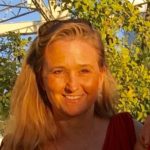As the PACE Health and Safety Working Group got started in the fall of 2018, two things were clear: we all believed that young people’s civic engagement was vital to improving the health and safety of our communities. We also knew that very little research existed within the field, indicating strong evidence or empirical research that supported these beliefs.
Comprised of funders and practitioners devoted to community health and safety, working group members partnered with Dr. Parissa J. Ballard of Wake Forest School of Medicine to address this void. The result is “Youth Civic Engagement and Health, Wellbeing, and Safety: A Review of Research,” a report which offers an in-depth understanding of what is currently known about the intersection of youth civic engagement, healthy, and safety. The paper also outlines the work most needed from our field, as we continue to face new challenges and seek solutions to build healthy, safe, and equitable communities. Three key takeaways from the report are of particular significance:
- It is important to understand where health and safety fit into the current civic engagement literature. The report illustrates the intersections between youth civic engagement, youth health and safety, and healthy communities—and five ways in which these outcomes intersect and reinforce one another. The literature then delves into these intersections in detail, highlighting existing research to define the relationships between them, also pointing to where existing research falls short.
- Several tensions within the literature must be investigated and better understood. For example, civic activism is often associated with greater self-esteem, empowerment, and self-confidence, even playing a role in buffering high levels of stress. Yet other studies also indicate that impacts of activism can vary among different socio-economic backgrounds. These disparities speak to important social dynamics with immediate impacts on community health and safety, and should be better understood.
- There are explicit needs for further research. This report is a powerful start to establishing the connections between community health and safety and youth civic engagement; it also illuminates the areas our field needs to better understand. Further research might include: future studies can focus on better understanding basic infrastructure needs (recruitment methods, programmatic logistics, etc.) for maximizing the impact of civic engagement, as well as better understanding the impact of both community and individual level health and safety outcomes.
As a professional committed for nearly two decades to the ways in which research influences policy and practice, I find that Ballard’s paper’s concluding statements identify perhaps the greatest need and challenge ahead: recognizing, addressing, and closing the gap between those who have access to meaningful, effective civic engagement opportunities and those who do not.
Engagement may only serve to reproduce social inequalities in terms of race, class, and gender if we—as a field—do not step back, analyze, and study current civic actions and professional practices. We need both qualitative and quantitative data that demonstrate what civic engagement looks like in different communities and how it can be built upon and improved for future generations.
At the Center for Cities + Schools, we have been working to engage our most vulnerable youth and schools in changing their cities to be more equitable, safe, and healthy for nearly two decades. We have seen young people from 4th to 12th grades inform equitable, mixed-income housing policies, advocate for kid-friendly and efficient transportation routes to access jobs and internships, and even help create safer and healthier schools and playgrounds.
We and our colleagues in this field know that in order to continue to deepen and improve our work, we must work with strong evidence and specific, proven indicators of change. We need to learn from and with young people about what matters most to them—and their communities—and then learn how to effectively turn those priorities into policy changes in communities across the nation.
In this complex age of “post-facts,” there may never be a more critical time to invest not only in research on the most effective forms of equitable civic engagement, but also in understanding the short- and longer-term implications of this work. The health and safety of vulnerable communities and future generations are at stake. This research is a significant contribution to the field, a clear indication of the promise at the intersection of youth civic engagement and community health and safety—and an indication of where we must lean in to learn more. It will be up to us—funders, practitioners, and those of us committed to healthy, safe, and equitable communities—to take the next step.
Deborah L. McKoy is the Executive Director and Founder of the UC Berkeley Center for Cities and Schools at the Institute of Urban and Regional Development and a lecturer in the Department of City and Regional Planning and the Graduate School of Education. Her research and teaching focuses on the intersection of educational reform, urban & metropolitan planning, community development and public policy. Central to her work is the critical role young people play in urban and metropolitan change and transformation.


